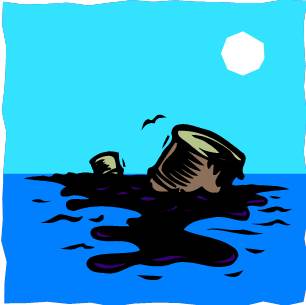Both CERCLA and EPCRA require you to report a release of a Hazardous Substance or Extremely Hazardous Substance (EHS) above its Reportable Quantity (RQ) in a 24 hour period. Read: Reporting Releases of Hazardous Substances and Extremely Hazardous Substances. Also: What Does CERCLA Identify as a Hazardous Substance?
Notification takes two forms:
- Immediate notification by owner, operator, or person in charge to the NRC, LEPC, and SERC.
- Written follow-up notification(s) to LEPC and SERC “as soon as practicable after the release“.
What is meant by immediate? And what is meant by: “as soon as practicable after the release“? This article will shed some light on these very important requirements.
Before we begin…
- Comprehensive Environmental Response, Compensation and Liability Act (CERCLA). AKA: Superfund
- Emergency Planning and Community Right to Know Act (EPCRA)
- National Response Center (NRC)
- Local Emergency Planning Committee (LEPC)
- State Emergency Planning Committee (SERC)
USEPA has not defined what is meant by “immediate”. However, in an enforcement response policy for the relevant regulations it established guidelines to assist Agency personnel in determining whether or not an “immediate” standard was met. It reads in part, “…ordinarily, delays in making the required notifications should not exceed 15 minutes after the person in charge has knowledge of the release. Immediate notification requires shorter delays whenever practicable.” Sure enough, the policy’s guidance for determining fines of non-compliance considers the “timeliness” of the notification and the fines begin after 15 minutes has been exceeded between the moment of determination of a reportable release and the notification. This policy guidance applies to the immediate notification requirements to both the NRC under C
As soon as practicable after the release:
Again, not defined by regulation. However, on its Superfund website and elsewhere the USEPA discloses that it considers 30 days from the date of the initial notification to the LEPC and SERC to be sufficient for submittal of the written follow-up notification. However, this is a limit to the Agency’s acceptance of delay and should not be seen as a target date; information should be provided as soon as it becomes available in the proper format. Also, please note that your LEPC or SERC may have their own interpretation of what “as soon as practicable after the release” means; be sure to check with them to ensure compliance.
Like this article? Subscribe to my Monthly Newsletter No marketing emails! |
Be prepared for a release of a hazardous substance, EHS, or something else at your facility by determining all possible reporting requirements you may be subject to: EPCRA, CERCLA, Clean Air Act, Clean Water ACT, RCRA, the HMTA, and more.


